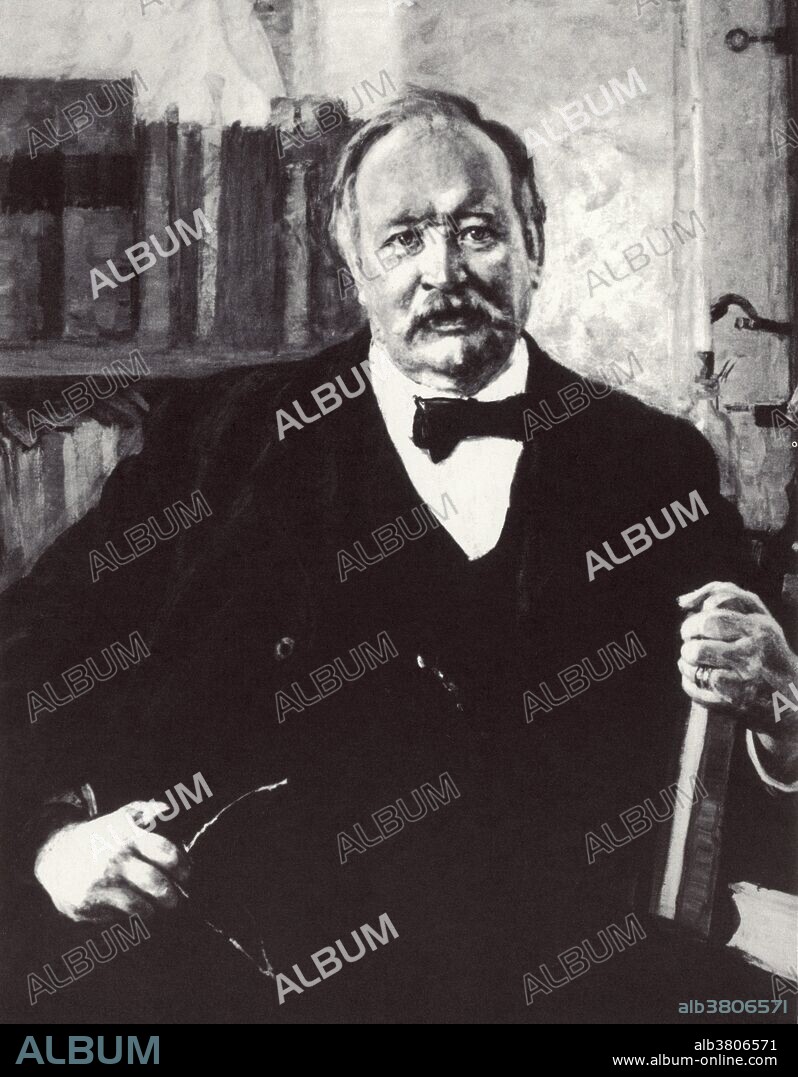alb3806571
Svante Arrhenius, Swedish Chemist

|
Zu einem anderen Lightbox hinzufügen |
|
Zu einem anderen Lightbox hinzufügen |



Haben Sie bereits ein Konto? Anmelden
Sie haben kein Konto? Registrieren
Dieses Bild kaufen.
Nutzung auswählen:

Titel:
Svante Arrhenius, Swedish Chemist
Untertitel:
Siehe automatische Übersetzung
Svante August Arrhenius (February 19, 1859 - October 2, 1927) was a Swedish scientist and one of the founders of the science of physical chemistry. In 1884 he submitted a 150 page dissertation on electrolytic conductivity to Uppsala for the doctorate. It did not impress the professors. Later, extensions of this very work would earn him the Nobel Prize in Chemistry. The most important idea in the dissertation was his explanation of the fact that neither pure salts nor pure water is a conductor, but solutions of salts in water are. In 1900, he became involved in setting up the Nobel Institutes and the Nobel Prizes. In 1902 he began to investigate physiological problems in terms of chemical theory. He determined that reactions in living organisms and in the test tube followed the same laws. In 1903 he became the first Swede to be awarded the Nobel Prize in chemistry. He also turned his attention to geology, astronomy, physical cosmology, and astrophysics, accounting for the birth of the solar system by interstellar collision. In 1927, he came down with an attack of acute intestinal catarrh, and died at the age of 68.
Bildnachweis:
Album / Science Source / New York Public Library
Freigaben (Releases):
Model: Nein - Eigentum: Nein
Rechtefragen?
Rechtefragen?
Bildgröße:
2931 x 3763 px | 31.6 MB
Druckgröße:
24.8 x 31.9 cm | 9.8 x 12.5 in (300 dpi)
Schlüsselwörter:
BERÜHMT • BERÜHMTE PERSÖNLICHKEIT • CHEMIE • CHEMIKER • EUROPAEER (F M) • EUROPAEER • EUROPÄER (F M) • EUROPÄER • EUROPÄISCH • ILLUSTRATION • ILLUSTRATIONS • MANN • NOBEL • NOBELPREIS • NOBELPREISTRAEGER • NOBELPREISTRÄGER • NOTABEL • PERSON • PERSöNLICHKEITEN • PERSÖNLICHKEITEN • PORTRAIT • PROMINENZ • SCHWEDISCH • WISSENSCH.: CHEMIE
 Pinterest
Pinterest Twitter
Twitter Facebook
Facebook Link kopieren
Link kopieren Email
Email
